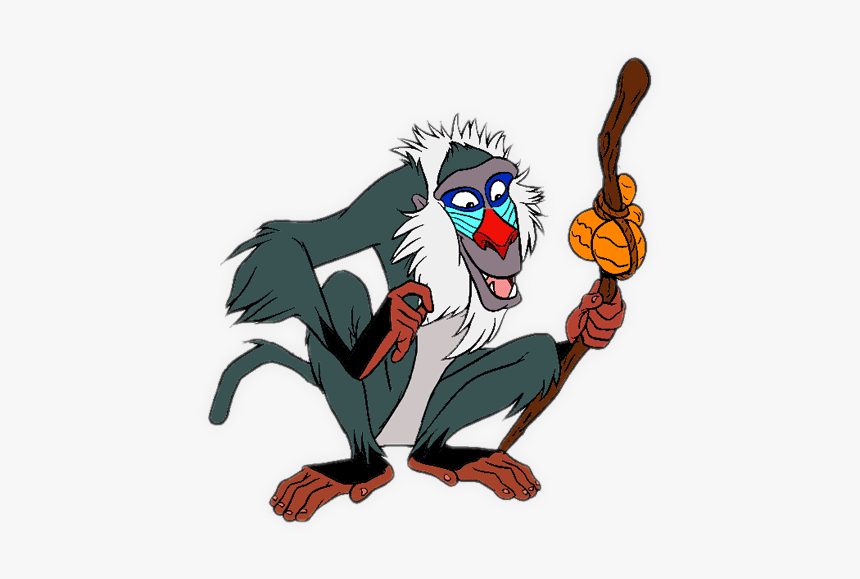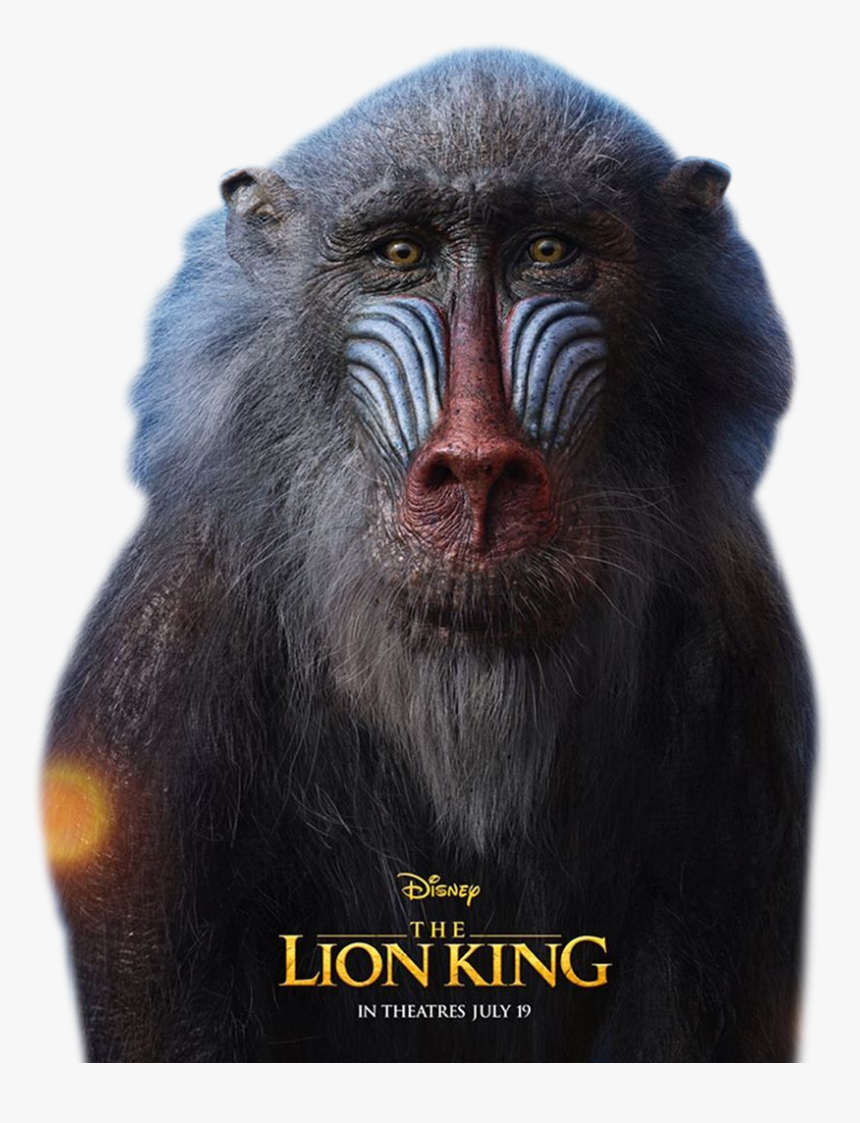What Kind Of Monkey Is Rafiki From The Lion King? Unveiling The Mystical Mongoose Lemur
Ever wondered what kind of monkey Rafiki is from The Lion King? Well, buckle up, because we're diving deep into the world of this beloved character, exploring his species, origins, and everything in between. Rafiki isn’t just a monkey—he’s a wise old soul who plays a pivotal role in Simba’s journey. But what exactly is he? Let’s find out!
Rafiki, the lovable and eccentric character from Disney's classic "The Lion King," has captured the hearts of millions around the globe. His wisdom, humor, and quirky personality make him one of the most memorable characters in animation history. But have you ever stopped to think about what kind of monkey Rafiki actually is? It’s not as straightforward as you might think, and that’s where things get really interesting.
While Rafiki is often referred to as a "monkey," his species is a bit more specific than that. In this article, we’ll uncover the truth about Rafiki’s species, delve into his role in the Pride Lands, and explore why he’s such an important figure in the story. So grab your popcorn, and let’s dive into the fascinating world of Rafiki!
- Jeffrey Dahmer Polaroids The Dark Legacy Captured In Film
- Debra Bollman The Remarkable Journey Of A Trailblazing Woman You Should Know About
Table of Contents:
- Rafiki's Biography
- What Kind of Monkey is Rafiki?
- Rafiki's Role in The Lion King
- Physical Characteristics of Rafiki
- Natural Habitat and Behavior
- Cultural Significance of Rafiki
- Comparison with Other Primates
- Fun Facts About Rafiki
- Conservation Status of Rafiki's Species
- Conclusion: Why Rafiki Matters
Rafiki's Biography
Who is Rafiki?
Rafiki is a wise old mandrill-like character who serves as the shaman of the Pride Lands. He plays a crucial role in guiding Simba through his journey from cub to king. Rafiki is known for his eccentric behavior, philosophical musings, and his signature laugh, "Asante sana! Squash banana!" But beyond his quirky personality, Rafiki is deeply rooted in the traditions of the Pride Lands, serving as a bridge between the physical world and the spiritual realm.
Below is a quick overview of Rafiki’s key details:
- Go Antiquing Your Ultimate Guide To Discovering Hidden Treasures
- Why July 16 Zodiac Is More Than Just A Star Sign
| Full Name | Rafiki |
|---|---|
| Species | Mongoose Lemur |
| Role | Shaman of the Pride Lands |
| Place of Origin | Africa (fictional) |
| Signature Traits | Wisdom, humor, and spiritual connection |
What Kind of Monkey is Rafiki?
Now, let’s get to the heart of the matter—what kind of monkey is Rafiki? While Disney portrays Rafiki as a mandrill-like character, the truth is that Rafiki is actually a mongoose lemur. This might come as a surprise to some, but if you look closely at Rafiki’s physical features, they align more closely with those of a mongoose lemur than a mandrill.
Here’s why:
- Mongoose lemurs are native to Madagascar, which fits with the African setting of "The Lion King."
- They have long tails, similar to Rafiki’s, and their facial features resemble those of Rafiki more than a mandrill’s.
- Mongoose lemurs are known for their intelligence and social behavior, making them a perfect fit for Rafiki’s wise and quirky personality.
Why the Confusion?
The confusion arises because Rafiki’s design incorporates elements from both mandrills and mongoose lemurs. Mandrills are known for their vibrant facial colors, which Disney animators used to enhance Rafiki’s appearance. However, when it comes to species classification, Rafiki is more accurately described as a mongoose lemur.
Rafiki's Role in The Lion King
Rafiki’s role in "The Lion King" is multifaceted. He is not just a supporting character but a central figure in the story. As the shaman of the Pride Lands, Rafiki performs important rituals, such as anointing Simba as the future king. He also acts as a mentor and guide, helping Simba overcome his inner demons and fulfill his destiny.
Rafiki’s wisdom and spiritual connection are key to the story’s themes of responsibility, growth, and renewal. His presence reminds us of the importance of tradition and the power of self-discovery.
Physical Characteristics of Rafiki
Rafiki’s physical appearance is a mix of mandrill-like features and mongoose lemur traits. Let’s break it down:
- Face: Rafiki has a distinctive face with vibrant colors, reminiscent of a mandrill. However, his overall structure aligns more closely with that of a mongoose lemur.
- Tail: Rafiki’s long tail is a dead giveaway that he’s a lemur. Mongoose lemurs have long, bushy tails that they use for balance.
- Size: Mongoose lemurs are relatively small, which fits with Rafiki’s compact frame.
How Does Rafiki’s Appearance Reflect His Personality?
Rafiki’s appearance is a reflection of his personality. His vibrant colors and quirky features mirror his eccentric behavior, while his wise eyes and calm demeanor speak to his spiritual depth. It’s a perfect blend of form and function.
Natural Habitat and Behavior
In the wild, mongoose lemurs inhabit the forests of Madagascar. They are arboreal creatures, spending most of their time in trees. They are social animals, living in small groups and communicating through a variety of vocalizations and body language.
While Rafiki’s habitat in "The Lion King" is fictional, it draws inspiration from the natural habitats of mongoose lemurs. The lush jungles and open savannas of the Pride Lands provide the perfect backdrop for Rafiki’s adventures.
Behavioral Traits
Mongoose lemurs are known for their intelligence and curiosity. They are active during the day and spend their time foraging for food, socializing, and grooming each other. These traits are reflected in Rafiki’s behavior, making him a believable and relatable character.
Cultural Significance of Rafiki
Rafiki’s character is deeply rooted in African culture and mythology. In many African traditions, shamans and wise elders play a crucial role in guiding the community. Rafiki embodies this tradition, serving as a bridge between the physical and spiritual worlds.
His use of African phrases, such as "Hakuna Matata" and "Asante sana," further reinforces his cultural significance. These phrases have become synonymous with "The Lion King" and are now part of popular culture.
Why Does Rafiki Matter?
Rafiki matters because he represents the wisdom and tradition that underpin many African cultures. He reminds us of the importance of respecting our elders and learning from their experiences. In a world that often values youth and innovation, Rafiki’s character serves as a powerful reminder of the value of wisdom and tradition.
Comparison with Other Primates
While Rafiki is a mongoose lemur, it’s interesting to compare him with other primates. Here are some key differences:
- Mandrills: Mandrills are larger and more colorful than mongoose lemurs. They are also more aggressive and less social.
- Gibbons: Gibbons are known for their long arms and acrobatic abilities. They are more arboreal than mongoose lemurs.
- Chimpanzees: Chimpanzees are highly intelligent and social, but they are much larger than mongoose lemurs.
Each of these primates has its own unique characteristics, but Rafiki’s blend of wisdom, humor, and spiritual connection makes him stand out.
Fun Facts About Rafiki
Here are some fun facts about Rafiki that you might not know:
- Rafiki’s name means "friend" in Swahili.
- He was voiced by Robert Guillaume, a renowned actor and singer.
- Rafiki’s staff is inspired by traditional African walking sticks.
- He was originally going to be a human character, but Disney decided to make him a primate instead.
Conservation Status of Rafiki's Species
Unfortunately, mongoose lemurs are endangered in the wild. Habitat destruction and hunting have led to a decline in their population. Conservation efforts are underway to protect these fascinating creatures and ensure their survival for future generations.
Disney has been involved in several conservation initiatives, using characters like Rafiki to raise awareness about the importance of protecting endangered species. By learning about Rafiki’s species, we can all play a part in conserving these incredible animals.
Conclusion: Why Rafiki Matters
In conclusion, Rafiki is much more than just a monkey—he’s a symbol of wisdom, tradition, and conservation. His role in "The Lion King" is a testament to the power of storytelling and the importance of respecting our natural world.
So, the next time you watch "The Lion King," take a moment to appreciate Rafiki’s unique blend of wisdom and humor. And remember, every time you learn about a species like the mongoose lemur, you’re helping to protect our planet’s incredible biodiversity.
Now, it’s your turn! Share this article with your friends, leave a comment below, and let us know what you think about Rafiki. Who knows, maybe you’ll discover something new about this beloved character!



Detail Author:
- Name : Elinor Pollich Jr.
- Username : albina.stracke
- Email : mozell45@hotmail.com
- Birthdate : 2002-03-22
- Address : 375 Kerluke Cliffs Laurettafurt, WI 02503-0299
- Phone : 820.232.2591
- Company : Roob-Lubowitz
- Job : Business Development Manager
- Bio : Quam rem modi et deserunt. Aut qui laboriosam ducimus reprehenderit magni vero excepturi. Voluptatem non asperiores eos. Aliquam et ex est nesciunt.
Socials
twitter:
- url : https://twitter.com/connelly2010
- username : connelly2010
- bio : Recusandae sit inventore quis sit voluptate ut. Quasi doloribus sapiente cum ipsam. Nostrum eos sed ipsa alias dolor qui.
- followers : 4993
- following : 1766
facebook:
- url : https://facebook.com/madelyn_connelly
- username : madelyn_connelly
- bio : Magni id est molestias libero recusandae.
- followers : 3017
- following : 99
instagram:
- url : https://instagram.com/madelyn_connelly
- username : madelyn_connelly
- bio : Sed exercitationem ea quo provident architecto earum quisquam possimus. Quas corporis ipsa aut.
- followers : 5536
- following : 2484
linkedin:
- url : https://linkedin.com/in/madelyn8978
- username : madelyn8978
- bio : Dolores est laborum vitae et.
- followers : 141
- following : 2201
tiktok:
- url : https://tiktok.com/@connellym
- username : connellym
- bio : Placeat ipsum voluptatem rerum deleniti quibusdam et dignissimos.
- followers : 2518
- following : 2834